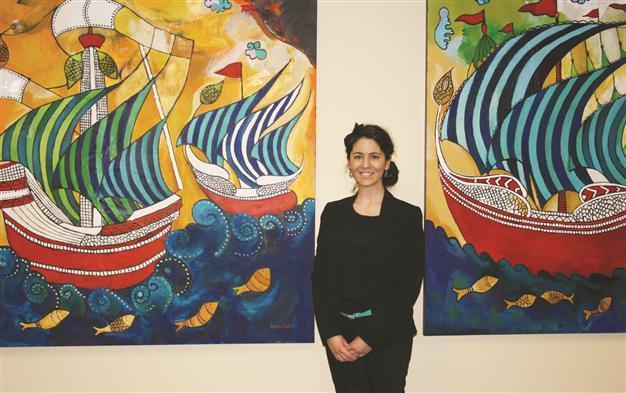Boston Turkish Festival ends
WASHINGTON – Anadolu Agency

Gizem Saka’s exhibition ‘Turquoise Dreams,’ which is organized within the scope of the festival, will remain open at Boston University until Jan 15. AA photo
The 18th Boston Turkish Festival, organized in Boston, ended. The festival aims to show modern Turkey to Americans.
Since its inception in 1996, the festival lasts for more than a month and is one of the largest of its kind in the U.S. The Festival theme, “Colors of Anatolia” reflects the diversity and richness of Turkish culture, ranging from art exhibits, workshops, gastronomic presentations and concerts to Turkish cinema. The festival also includes screenings of the Boston Turkish Festival International Documentary and Short Film Competition.
The festival organizers said the festival program drew great interest from people living in Boston and they reached over 200 people this year with the help of six-week-long promotional campaigns.
The director of the festival, Erkut Gömülü, said the 19th Boston Turkish Film Festival will be organized next year between Oct. 29 and Dec. 15 and preparations have already started.
The young Turkish painter Gizem Saka’s exhibition, titled “Turquoise Dream,” which began within the scope of the festival and was set to be finished on Dec. 15, was extended due to great interest.
The exhibition is inspired by Ottoman ceramics and tiles. Speaking about the exhibition, Saka said, “For this exhibit, I rely on the color scheme of original ceramic paintings as well. The İznik palette started with cobalt blue and then grew to incorporate first a turquoise, then red, and in the second half of the 16th century, a wonderful mixture of emerald green, which improved the turquoise. I strive to match that color in my palette, although it is difficult. I use about 10 different turquoises and try to mix them in different combinations. I also use a thin coat of varnish, which I never did before in painting. The original tiles were glazed before they were kilned, so in the bowls and plates, there is this glossy and transparent coating. I wanted to reflect that in my canvasses.”
The exhibition can be seen at Boston University until Jan. 15, 2014.
